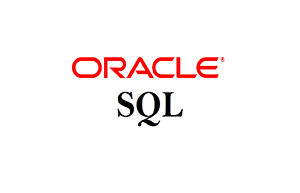ORACLE SQL
- 30 days of instructor-led training
- Certification exam
- Soft Copy of Course material
- 100% Success Rate
- Highly experienced and certified trainers
- Free refreshment classes within 6 months

Demonstrate understanding of fundamental SQL concepts needed to undertake any database project. Provide depth of knowledge of SQL and its use when working with the Oracle Database server. Gain a working knowledge of queries , insert, update and delete SQL statements as well as some Data Definition language and Data Control Language, the optimizer, tales and indexes, data modeling and normalization. By taking this course, a individual proves fluency in and a solid understanding of SQL language, data modeling and using SQL to create and manipulate tables in an Oracle Database.
At the end of this course you will be able to:
· Identify the major structural components of the Oracle Database 12c
· Create reports of aggregated data
· Write SELECT statements that include queries
· Retrieve row and column data from tables
· Run data manipulation statements (DML) in Oracle Database 12c
· Create tables to store data
· Utilize views to display data
· Control database access to specific objects
· Manage schema objects
· Display data from multiple tables using the ANSI SQL 99 JOIN syntax
· Manage objects with data dictionary views
· Write multiple-column sub-queries
· Employ SQL functions to retrieve customized data
· Use scalar and correlated sub-queries
· Create reports of sorted and restricted data
Who Should do this course?
· Application Developers
· Data Warehouse Developer
· Database Administrators
· Developer
Prepare to pass exam: 1Z0-071
Course Outline
Introduction to Oracle Database
· List the features of Oracle Database 12c
· Discuss the basic design, theoretical, and physical aspects of a relational database
· Categorize the different types of SQL statements
· Describe the data set used by the course
· Log on to the database using SQL Developer environment
· Save queries to files and use script files in SQL Developer
Retrieve Data using the SQL SELECT Statement
· List the capabilities of SQL SELECT statements
· Generate a report of data from the output of a basic SELECT statement
· Select All Columns
· Select Specific Columns
· Use Column Heading Defaults
· Use Arithmetic Operators
· Understand Operator Precedence
· Learn the DESCRIBE command to display the table structure
Learn to Restrict and Sort Data
· Write queries that contain a WHERE clause to limit the output retrieved
· List the comparison operators and logical operators that are used in a WHERE clause
· Describe the rules of precedence for comparison and logical operators
· Use character string literals in the WHERE clause
· Write queries that contain an ORDER BY clause to sort the output of a SELECT statement
· Sort output in descending and ascending order
Usage of Single-Row Functions to Customize Output
· Describe the differences between single row and multiple row functions
· Manipulate strings with character function in the SELECT and WHERE clauses
· Manipulate numbers with the ROUND, TRUNC, and MOD functions
· Perform arithmetic with date data
· Manipulate dates with the DATE functions
Invoke Conversion Functions and Conditional Expressions
· Describe implicit and explicit data type conversion
· Use the TO_CHAR, TO_NUMBER, and TO_DATE conversion functions
· Nest multiple functions
· Apply the NVL, NULLIF, and COALESCE functions to data
· Use conditional IF THEN ELSE logic in a SELECT statement
Aggregate Data Using the Group Functions
· Use the aggregation functions to produce meaningful reports
· Divide the retrieved data in groups by using the GROUP BY clause
· Exclude groups of data by using the HAVING clause
Display Data From Multiple Tables Using Joins
· Write SELECT statements to access data from more than one table
· View data that generally does not meet a join condition by using outer joins
· Join a table to itself by using a self join
Use Sub-queries to Solve Queries
· Describe the types of problem that sub-queries can solve
· Define sub-queries
· List the types of sub-queries
· Write single-row and multiple-row sub-queries
The SET Operators
· Describe the SET operators
· Use a SET operator to combine multiple queries into a single query
· Control the order of rows returned
Data Manipulation Statements
· Describe each DML statement
· Insert rows into a table
· Change rows in a table by the UPDATE statement
· Delete rows from a table with the DELETE statement
· Save and discard changes with the COMMIT and ROLLBACK statements
· Explain read consistency
Use of DDL Statements to Create and Manage Tables
· Categorize the main database objects
· Review the table structure
· List the data types available for columns
· Create a simple table
· Decipher how constraints can be created at table creation
· Describe how schema objects work
Other Schema Objects
· Create a simple and complex view
· Retrieve data from views
· Create, maintain, and use sequences
· Create and maintain indexes
· Create private and public synonyms
Control User Access
· Differentiate system privileges from object privileges
· Create Users
· Grant System Privileges
· Create and Grant Privileges to a Role
· Change Your Password
· Grant Object Privileges
· How to pass on privileges?
· Revoke Object Privileges
Management of Schema Objects
· Add, Modify, and Drop a Column
· Add, Drop, and Defer a Constraint
· How to enable and Disable a Constraint?
· Create and Remove Indexes
· Create a Function-Based Index
· Perform Flashback Operations
· Create an External Table by Using ORACLE_LOADER and by Using ORACLE_DATAPUMP
· Query External Tables
Manage Objects with Data Dictionary Views
· Explain the data dictionary
· Use the Dictionary Views
· USER_OBJECTS and ALL_OBJECTS Views
· Table and Column Information
· Query the dictionary views for constraint information
· Query the dictionary views for view, sequence, index and synonym information
· Add a comment to a table
· Query the dictionary views for comment information
Manipulate Large Data Sets
· Use Subqueries to Manipulate Data
· Retrieve Data Using a Subquery as Source
· Insert Using a Subquery as a Target
· Usage of the WITH CHECK OPTION Keyword on DML Statements
· List the types of Multitable INSERT Statements
· Use Multitable INSERT Statements
· Merge rows in a table
· Track Changes in Data over a period of time
Data Management in different Time Zones
· Time Zones
· CURRENT_DATE, CURRENT_TIMESTAMP, and LOCALTIMESTAMP
· Compare Date and Time in a Session’s Time Zone
· DBTIMEZONE and SESSIONTIMEZONE
· Difference between DATE and TIMESTAMP
· INTERVAL Data Types
· Use EXTRACT, TZ_OFFSET and FROM_TZ
· Invoke TO_TIMESTAMP,TO_YMINTERVAL and TO_DSINTERVAL
Retrieve Data Using Sub-queries
· Multiple-Column Subqueries
· Pairwise and Nonpairwise Comparison
· Scalar Subquery Expressions
· Solve problems with Correlated Subqueries
· Update and Delete Rows Using Correlated Subqueries
· The EXISTS and NOT EXISTS operators
· Invoke the WITH clause
· The Recursive WITH clause
Preparation of 1z0-071
RELATED COURSES
TO GET EXCLUSIVE BENEFITS

"One of the best place to learn tech. Great support and amazing teachers! I'd recommend it to others, 10/10."
Abhinav Gyawali

"I completed my RHCSA and RHCE from Computer Point Nepal. The learning environment here is suited for both working professionals as well as students. From my experience tutors and staff members are very helpful. With their proper guidance I was able to complete RHCSA certification."
Avishek Pradhan

"CPN has always been a place of great learning and place to find proper guidance. They have experienced instructor who can provide guidance and suggestion about career and courses which is really helpful for beginners who want to know about career options in IT. CPN is highly recommended in my book as a place to learning and developing skills needed by both beginners and professionals alike."
Pravesh Shrestha
Red Hat StudentADDITIONAL LINKS
We accept payment by Cash, Bank Transfer, Cheque, Credit Cards, eSewa and Fonepay.
Jame Market, Ghantaghar, Kathmandu, Nepal
01-5333117 / 01-5333121
info@computerpoint.com.np
Sunday – Friday, 07:00 AM – 07:00 PM
